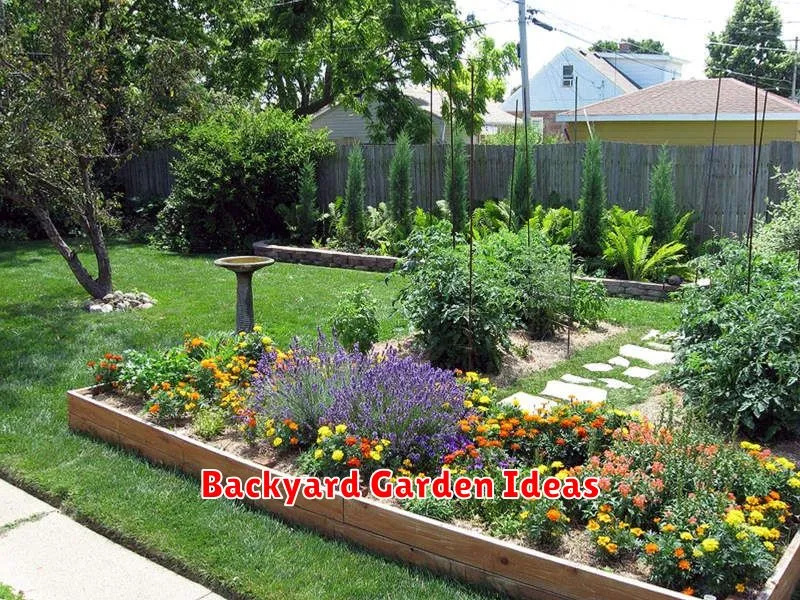Ready to transform your outdoor space into a stunning haven? This article showcases 10 inspiring backyard garden designs, perfect for igniting your creativity and providing plenty of garden design ideas. Whether you dream of a vibrant flower garden bursting with color, a serene Zen garden promoting tranquility, or a productive vegetable garden brimming with fresh produce, we’ve got the backyard landscaping inspiration you need. Get ready to discover incredible garden design inspiration and plan your dream outdoor oasis!
Rustic Wooden Garden
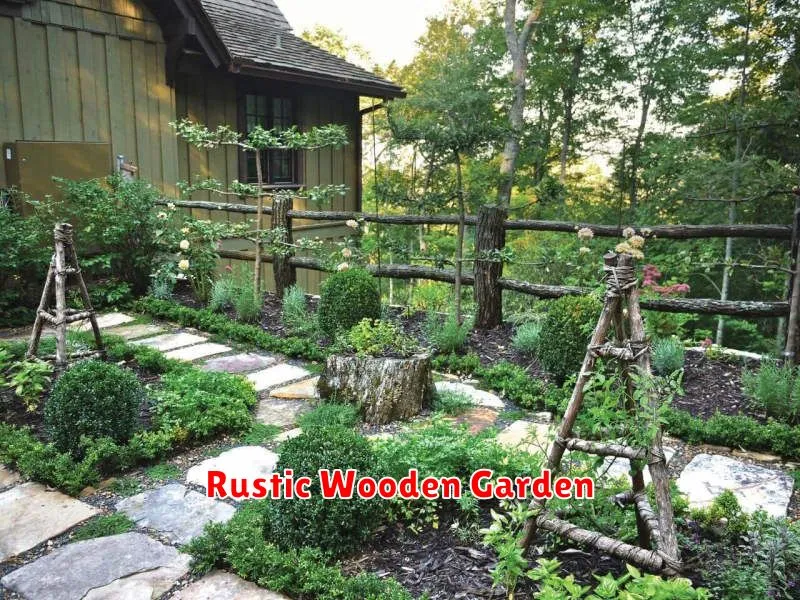
Creating a rustic wooden garden is a fantastic way to bring warmth and natural charm to your outdoor space. The beauty of wood lies in its versatility; it can be incorporated in countless ways, from simple accents to major structural elements.
Planning is key. Before you start, consider the overall style you’re aiming for. Do you envision a cozy cottage garden, a more rugged, reclaimed look, or something in between? Think about the size of your space and how you want to utilize it. A detailed plan will help you avoid costly mistakes and ensure a cohesive design.
Choosing your wood is the next crucial step. Different types of wood offer varying levels of durability and aesthetics. Cedar and redwood are naturally resistant to rot and insects, making them excellent choices for long-lasting structures. Reclaimed wood adds a unique character and contributes to sustainability, although it might require more preparation.
Incorporating wooden elements can take many forms. Consider building a wooden fence or trellis to define your garden space and support climbing plants. Raised garden beds crafted from wood add visual appeal and improve drainage. Planters and decorations made from wood can further enhance the rustic theme. Even simple wooden stakes can create a charming look.
Don’t forget the finishing touches. A protective sealant will extend the life of your wooden structures and enhance their natural beauty. Consider staining or painting your wood for added protection and to complement your garden’s overall color scheme. Adding plants with contrasting textures and colors will bring your rustic wooden garden to life, completing the charming and inviting atmosphere you’ve created.
With a bit of planning and creativity, you can easily transform your outdoor space into a captivating rustic wooden garden. Enjoy the process and the beautiful results!
Modern Zen Oasis
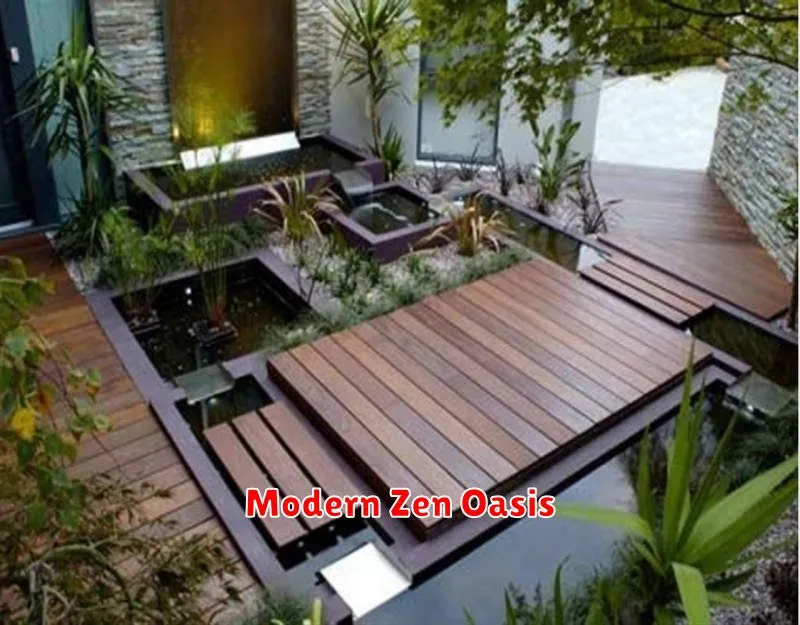
Creating a modern Zen oasis in your home doesn’t require a complete overhaul. It’s about incorporating key elements that foster a sense of calm, mindfulness, and balance.
Minimalism is key. Declutter ruthlessly. A clean, uncluttered space is the foundation of a serene environment. Focus on essential items, removing anything that doesn’t serve a purpose or bring you joy. This allows for a greater appreciation of the items you do keep.
Natural materials are essential for achieving that Zen feel. Incorporate wood, stone, bamboo, and natural fibers into your decor. Think woven rugs, wooden furniture, and stone accents. These elements bring the outdoors in, creating a connection to nature that promotes tranquility.
Neutral color palettes are crucial. Stick to calming shades of white, beige, gray, and soft greens. These colors create a sense of spaciousness and tranquility, allowing you to relax and unwind. A pop of color here and there can be incorporated, but keep it minimal and intentional.
Lighting plays a significant role in setting the mood. Opt for soft, diffused lighting instead of harsh overhead lights. Consider using floor lamps, table lamps, and candles to create a warm and inviting ambiance. Natural light is also invaluable – maximize it by keeping windows unobstructed.
Plants add life and vibrancy to any space. Incorporate a variety of plants of different sizes and textures to add a touch of nature. The greenery will not only enhance the aesthetics but also improve air quality, further contributing to a relaxing atmosphere.
Finally, don’t forget the sensory details. The subtle scent of essential oils like lavender or sandalwood can enhance relaxation. Soft, natural fabrics for your bedding and upholstery can further contribute to a sense of comfort and well-being. Creating a modern Zen oasis is a journey of mindful design, focused on creating a space that nurtures your soul and promotes serenity.
Colorful Floral Landscape
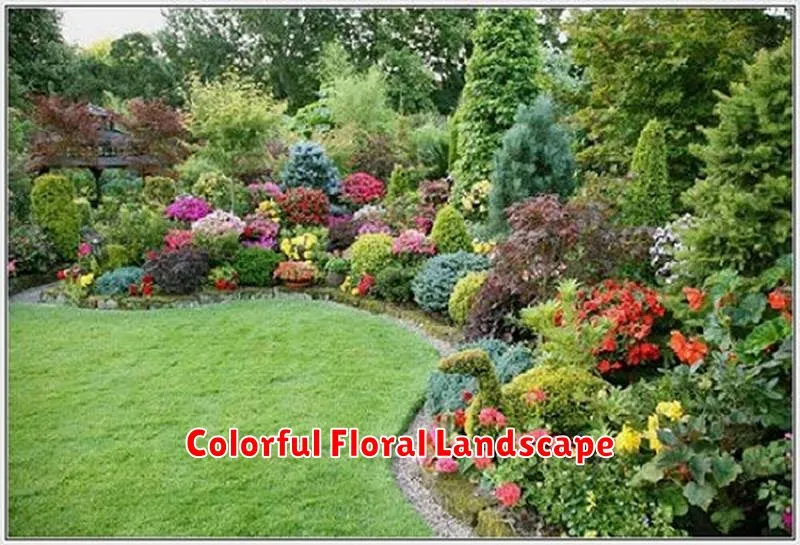
Imagine a breathtaking vista, a vibrant tapestry woven from nature’s most exquisite threads. This is the essence of a colorful floral landscape, a scene where the eye is captivated by a riot of hues and the spirit is lifted by the sheer beauty of nature’s artistry.
The palette is as diverse as the flowers themselves. Deep, rich reds of poppies and roses mingle with the sunny yellows of daffodils and buttercups. Delicate pinks and purples of lavender and lilac create a soft contrast against the bolder colors. Even the greens, from the deep emerald of lush foliage to the lighter, spring-fresh hues of new growth, play a crucial role in enhancing the overall impact.
Beyond the simple color, it’s the texture and form of the floral landscape that truly captivates. The delicate petals of a wildflower stand in stark contrast to the robust leaves of a sturdy shrub. The graceful sway of tall grasses adds movement and rhythm to the scene, creating a dynamic and ever-changing display. The interplay of different heights and shapes, from the miniature violets hugging the earth to the majestic sunflowers reaching for the sky, provides a captivating visual journey.
A colorful floral landscape isn’t just a pretty picture; it’s a testament to the power and diversity of the natural world. It’s a reminder of the beauty that can be found in the simplest of things, a source of inspiration and joy that can uplift the soul and rejuvenate the spirit. Whether viewed from afar or experienced up close, it’s an immersive sensory experience that leaves a lasting impression.
Take a moment to appreciate the wonder of a colorful floral landscape. Let its vibrant hues and dynamic forms transport you to a place of peace and tranquility, a haven where the beauty of nature reigns supreme.
Pond-Centered Garden
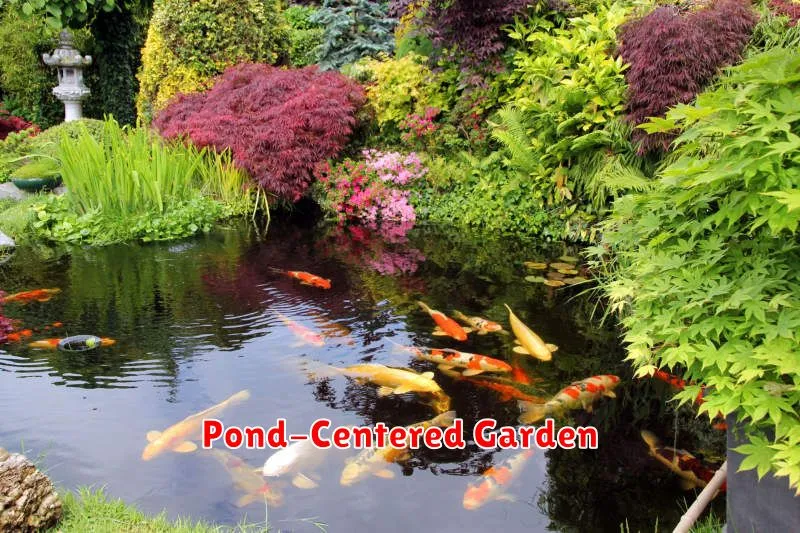
Designing a pond-centered garden offers a unique and captivating approach to landscaping. It transforms a simple water feature into the heart of your outdoor space, creating a tranquil and visually stunning focal point. This design aesthetic invites nature into your backyard, fostering a harmonious blend of water, plants, and hardscaping.
The central pond acts as a dynamic element, reflecting the sky and surrounding greenery while providing a haven for wildlife. The size and shape of the pond should be carefully considered, taking into account the overall dimensions of your garden and the desired aesthetic. A larger pond provides more visual impact and habitat potential, while a smaller one might be more suitable for compact spaces.
Plant selection is key to achieving a cohesive and flourishing pond-centered garden. Consider incorporating a variety of aquatic plants, such as water lilies, lotus flowers, and bog plants, to add texture, color, and biodiversity to the water’s edge. These plants not only enhance the visual appeal but also help maintain water quality and provide shelter for beneficial insects and amphibians. Surrounding the pond, strategically place trees, shrubs, and perennials to create a layered and dynamic landscape. Choose plants that thrive in moist conditions and complement the colors and textures of your aquatic plants.
Hardscaping elements can be incorporated to enhance the overall design and functionality of your pond-centered garden. Pathways made of natural stone or gravel can lead visitors gracefully through the space, while strategically placed seating areas provide opportunities for relaxation and contemplation. Consider incorporating a small bridge or stepping stones to allow for access to different parts of the garden without disrupting the natural feel. Careful consideration of materials will ensure a harmonious blend with the surrounding nature.
Lighting plays a crucial role in enhancing the ambiance of your pond-centered garden, particularly during evening hours. Submerged lights can illuminate the pond’s depths, highlighting the aquatic plants and creating a magical underwater glow. Path lighting guides visitors safely through the space, while strategically placed spotlights can accentuate specific features such as statues, waterfalls, or unique plant specimens. The thoughtful use of lighting transforms the garden into a mesmerizing nighttime spectacle.
Creating a pond-centered garden is an engaging process that allows for creativity and personalization. By carefully considering the size and shape of the pond, the selection of plants and hardscaping elements, and the use of lighting, you can cultivate a tranquil oasis that harmoniously blends nature and design, becoming a treasured retreat in your own backyard.
Vertical Vegetable Patch
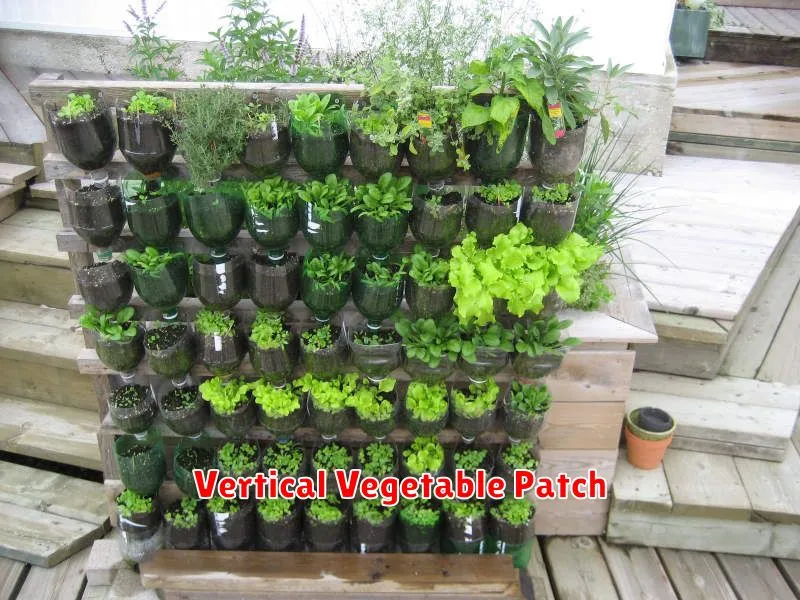
Creating a vertical vegetable patch is a fantastic way to maximize space in your garden, especially if you’re working with a small yard or balcony. This innovative gardening method allows you to grow a surprising amount of produce in a limited area, making it perfect for urban dwellers and those with limited outdoor space.
There are numerous ways to build a vertical garden. You can utilize readily available materials like recycled pallets, repurposed wooden crates, or even PVC pipes. The key is to ensure adequate drainage and sufficient space for the roots of your plants to grow. Proper spacing is crucial to prevent overcrowding and promote healthy growth.
When planning your vertical vegetable patch, consider the sunlight requirements of your chosen plants. Most vegetables need at least six hours of sunlight per day. Choose a location that receives ample sunlight, and if necessary, supplement with grow lights. Watering is another critical aspect; vertical gardens can dry out quickly, so a regular watering schedule is essential, especially during hot and dry weather.
The types of vegetables you can grow vertically are surprisingly diverse. Leafy greens like lettuce and spinach are excellent choices, as are climbing vegetables such as cucumbers, beans, and tomatoes. Herbs such as basil and mint also thrive in vertical gardens. Experiment with different vegetables to find what works best in your climate and growing conditions.
Building a vertical vegetable patch offers numerous benefits beyond space saving. It improves air circulation, reducing the risk of fungal diseases. It can also enhance the aesthetics of your outdoor space, transforming a dull area into a vibrant and productive garden. So, embrace vertical gardening and enjoy the rewards of fresh, homegrown vegetables!
Pergola Shaded Garden
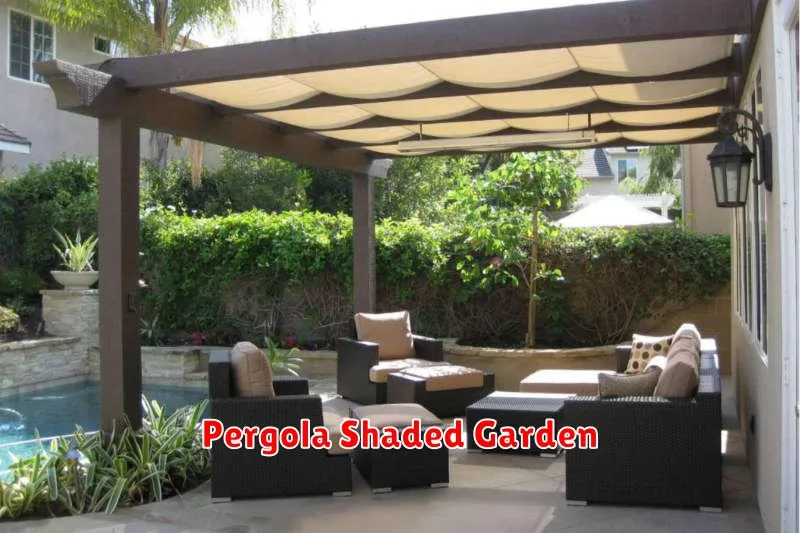
Transform your outdoor space into a tranquil oasis with a pergola shaded garden. Pergolas offer a beautiful and practical way to add shade, structure, and elegance to your backyard, patio, or deck.
The benefits extend beyond aesthetics. A well-placed pergola provides shade from the harsh summer sun, creating a comfortable and inviting area for relaxation and entertainment. This protection from direct sunlight also helps to prolong the life of your outdoor furniture and plants.
Design versatility is another key advantage. Pergolas can be customized to fit any style, from rustic and charming to modern and minimalist. Consider the overall design of your home and landscape when choosing materials like wood, metal, or a combination of both. The size and shape of your pergola should also be carefully planned to ensure it complements the surrounding space.
Climbing plants, such as vines and roses, can be trained to grow up and around the pergola’s structure, creating a lush and verdant canopy. This natural shade adds a touch of romanticism and privacy, transforming your pergola into a secluded retreat. Consider planting fragrant varieties for an extra sensory experience.
Beyond plants, you can enhance your pergola with outdoor lighting, creating a magical ambiance for evening gatherings. String lights, lanterns, or spotlights can cast a warm and inviting glow, extending the usability of your space into the night. Add comfortable seating, such as cushioned chairs or a hammock, to complete your relaxing outdoor haven.
Creating a pergola shaded garden is an investment that offers both beauty and functionality. It’s a project that can be enjoyed for years to come, providing a delightful space for relaxation, entertaining, and simply appreciating the beauty of your surroundings. With careful planning and attention to detail, you can create a truly unique and personalized outdoor space.
Outdoor Fire Pit Setup
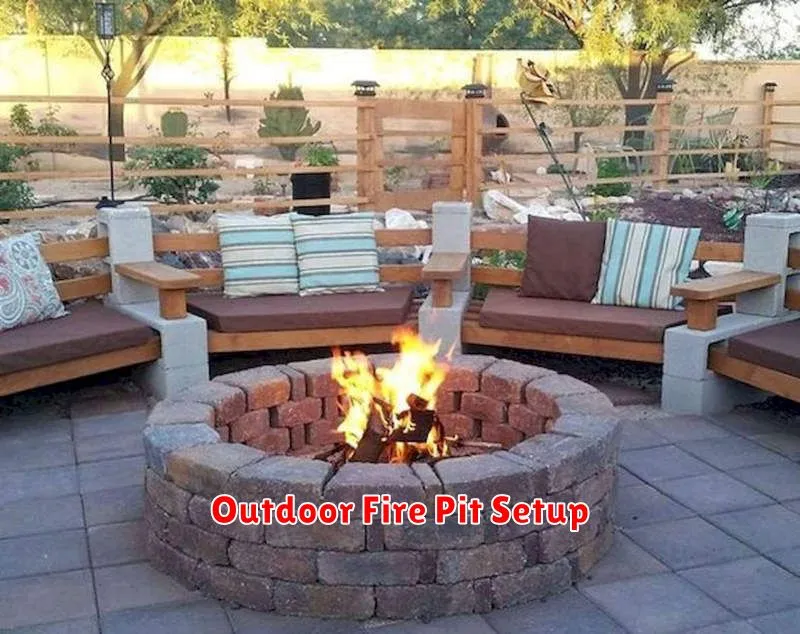
Setting up an outdoor fire pit can transform your backyard into a cozy and inviting space for gatherings and relaxation. It’s a relatively straightforward process, but careful planning ensures a safe and enjoyable experience. This guide will walk you through the essential steps.
Location, Location, Location: Choosing the right spot is crucial. Consider safety first. Keep the pit at least 10 feet away from any structures, overhanging branches, and flammable materials. Check local fire regulations and HOA guidelines before you begin. Also, think about convenience; you’ll want it close enough to your house for easy access but far enough away to avoid smoke drifting into living areas. Finally, factor in aesthetics; select a location that complements your landscaping.
Choosing Your Fire Pit: There are various types of fire pits available, each with its own pros and cons. Pre-fabricated fire pits are convenient and readily available, while DIY options offer more customization. Consider the material (stone, metal, brick) based on your aesthetic preferences and budget. Ensure the fire pit is the appropriate size for your needs and the space you have available.
Essential Accessories: Don’t forget the essentials! A sturdy fire poker is necessary for managing the fire, and a metal grate protects the bottom of the pit and helps with airflow. Having a screen on hand is a smart safety precaution. Consider adding fire starters and kindling for efficient fire-building. A bucket of sand or water nearby is a crucial safety measure for quickly extinguishing the flames if needed.
Building Your Fire: Start with a small base of kindling, arranged in a teepee shape. Gently add larger pieces of firewood as the kindling catches. Avoid using accelerants like gasoline or lighter fluid, as these can cause dangerous flare-ups. Always supervise the fire and never leave it unattended. When you’re finished, ensure the embers are completely extinguished before leaving the area.
Maintenance and Safety: Regularly clean out ash and debris from your fire pit. Check for any signs of damage or wear and tear. Safety is paramount. Never leave a fire unattended, keep children and pets at a safe distance, and always follow local fire safety regulations. Enjoy the warmth and ambiance of your new outdoor fire pit responsibly!
Trellis and Ivy Garden
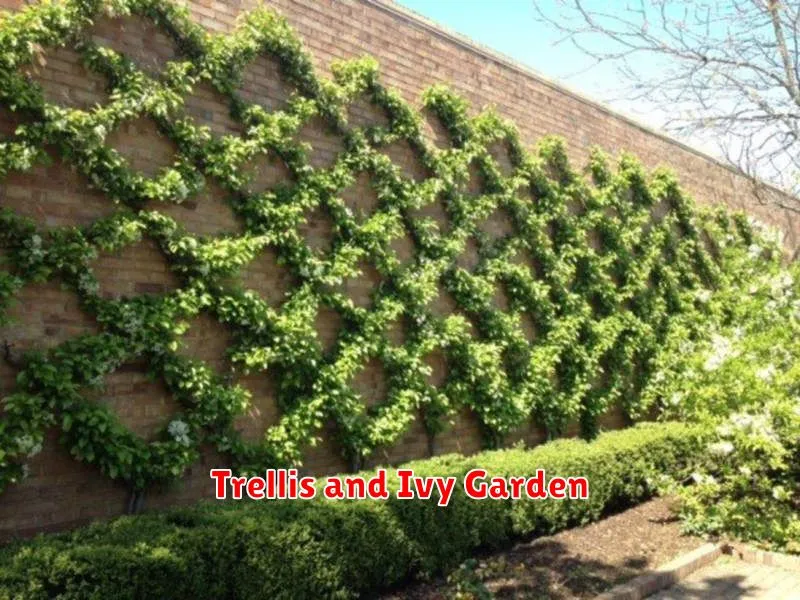
Creating a trellis and ivy garden is a rewarding project that adds both beauty and functionality to your outdoor space. The combination of a sturdy trellis structure and the vibrant, climbing growth of ivy creates a visually stunning effect, while also providing shade, privacy, and a natural, lush ambiance.
Choosing the right trellis is crucial. Consider the size and style that best complements your existing garden design. Materials range from simple wood to more ornate metal, each offering a unique aesthetic. Think about the overall scale; a small trellis might get overwhelmed by vigorous ivy, while an oversized trellis can dwarf your other plants.
Selecting the appropriate ivy is equally important. There are numerous varieties available, each with differing growth habits and leaf colors. Some ivies grow aggressively, requiring regular pruning to manage their spread. Others are more compact and easier to maintain. Researching different types beforehand will ensure you choose an ivy that aligns with your desired level of maintenance and aesthetic preferences. Consider factors like sun exposure and soil type when making your selection.
Planting your ivy is straightforward. Ensure the soil is well-drained and amended with organic matter. Water thoroughly after planting and regularly during the establishment phase. As your ivy grows, guide the vines along the trellis using gentle ties or clips to encourage even coverage and prevent damage to the plant. Regular pruning will maintain the desired shape and size of your ivy, preventing it from becoming overgrown or unruly.
Beyond the aesthetic appeal, a trellis and ivy garden offers several practical benefits. The dense foliage of ivy provides excellent shade, cooling down patio areas or creating a secluded retreat. It also enhances privacy by screening unsightly views or creating a natural boundary. Furthermore, the vertical structure of the trellis can help to maximize space in smaller gardens.
With a little planning and care, a trellis and ivy garden can become a stunning focal point in your outdoor oasis. Enjoy the process of watching your ivy flourish and transform your garden into a vibrant and inviting space. Remember to enjoy the journey as much as the end result!
Japanese-Style Garden
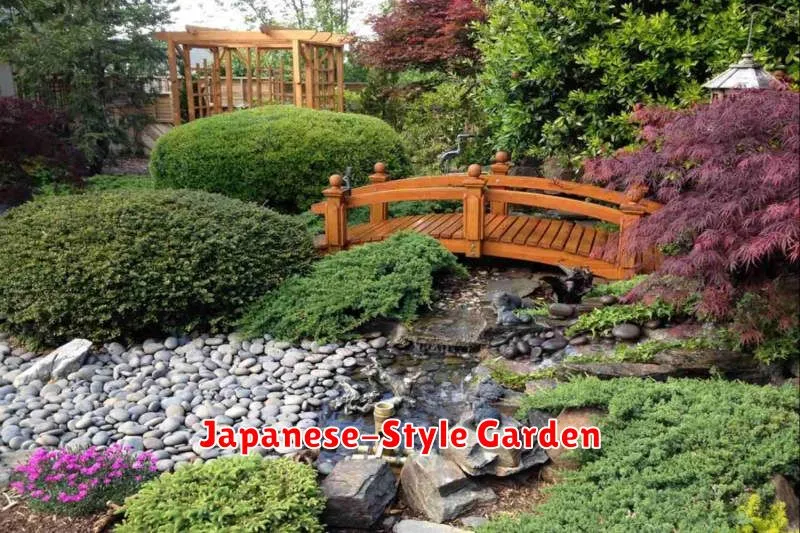
A Japanese-style garden, also known as a Japanese garden, is a tranquil and carefully designed space that evokes a sense of serenity and harmony with nature. These gardens are not simply aesthetically pleasing; they are meant to be experienced through all five senses, offering a space for meditation and contemplation.
Key features often include meticulously raked gravel, representing water or sand dunes; carefully pruned trees and shrubs, often using techniques like cloud pruning to create specific shapes; and strategically placed rocks, each with its own symbolic meaning. Water features, such as ponds, streams, and waterfalls, are common elements, adding a soothing sound and visual appeal. The use of natural materials like wood, stone, and bamboo is paramount, enhancing the organic feel of the garden.
Different styles of Japanese gardens exist, each with its own unique characteristics. Zen gardens, for example, are minimalist and primarily composed of raked gravel, rocks, and carefully placed plants. Landscape gardens, on the other hand, attempt to capture the essence of natural landscapes on a smaller scale, incorporating hills, valleys, and ponds. Tea gardens are designed for the traditional Japanese tea ceremony, emphasizing simplicity and purity.
The creation of a Japanese garden is a labor of love, requiring careful planning and execution. Every element is thoughtfully considered, and the overall design aims to create a feeling of balance and tranquility. The result is a space that offers respite from the stresses of modern life, providing a place for quiet reflection and a connection with the natural world.
Whether it’s a miniature Zen garden in a small courtyard or a sprawling landscape garden, a Japanese-style garden offers a unique opportunity to appreciate the beauty and simplicity of nature, fostering a sense of peace and inner calm.
Minimalist Patio Garden
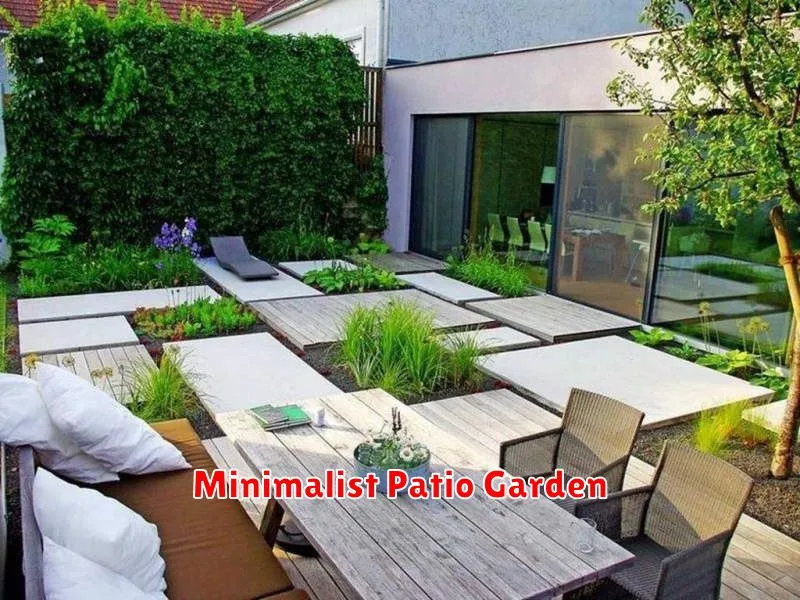
Creating a minimalist patio garden doesn’t mean sacrificing beauty or enjoyment; it’s about curating a space that’s both stylish and functional. The key is to focus on a few carefully chosen elements, emphasizing simplicity and clean lines.
Start with the foundation. A simple, neutral-colored container, perhaps a sleek concrete pot or a modern ceramic planter, will serve as a stunning backdrop for your plants. Avoid overcrowding; select only a few key plants that complement each other in terms of color, texture, and size.
Consider incorporating vertical elements. A small, minimalist trellis or a wall-mounted planter can maximize space and add visual interest without cluttering the area. This is particularly helpful for smaller patios.
Lighting plays a crucial role in setting the mood. A single, elegant pendant light or a set of strategically placed solar-powered lights can add ambiance without overwhelming the space. Opt for soft, warm lighting to enhance the relaxing atmosphere.
Choose plants wisely. Succulents, herbs, or a small, well-maintained flowering plant are excellent choices for a minimalist patio garden. Their low-maintenance nature complements the overall aesthetic. Think about the color palette and stick to a limited selection for a cohesive look.
Finally, don’t forget the finishing touches. A simple, modern-designed watering can, a sleek garden tool set, or a small, minimalist sculpture can add personality and refine the overall design without disrupting the clean lines of your minimalist haven. Remember, less is more.
With careful planning and a focus on simplicity, you can create a stunning and relaxing minimalist patio garden that’s both beautiful and easy to maintain. Enjoy your peaceful outdoor retreat!

